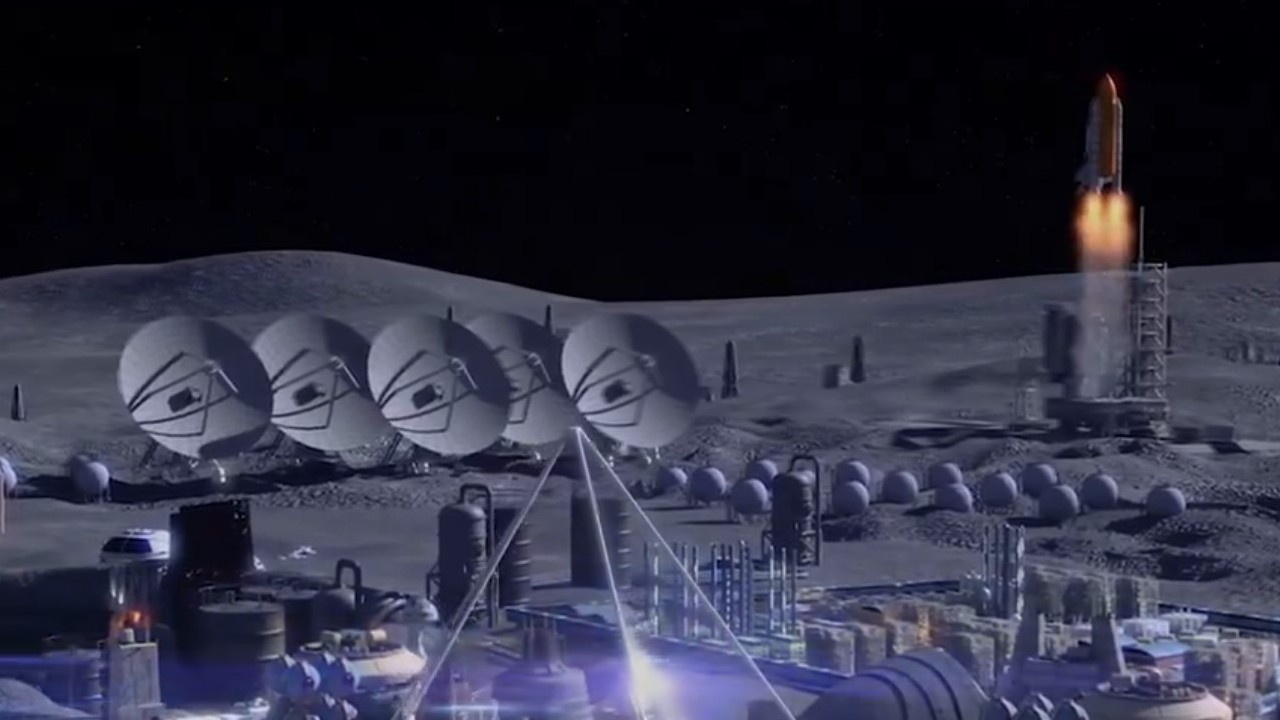China to test lunar-soil bricks in space to pave the way for its planned moon base
Researchers want to study how bricks made from local moon materials hold up in extreme environments.

China will send samples of bricks to its space station in the coming months to test their durability in extreme conditions and potential use in building moon bases.
Samples of bricks made of varying compositions from lunar soil simulant will be launched to the Tiangong space station aboard the upcoming Tianzhou 8 cargo mission, according to a report from Chinese state media CCTV.
The bricks will be subjected to three years of exposure tests in space. They will be bombarded by ultraviolet light and cosmic rays and subjected to temperature differences. This will test the strength and durability of bricks in extreme environments and how the materials behave in the vacuum of space.
The experiment is designed to give insight into which composition and which methods of producing bricks from lunar soil will be most suitable for building structures on the moon.
One method for creating these bricks, according to CCTV, involves heating the simulant to over 1,830 degrees Fahrenheit (1,000 degrees Celsius) using electromagnetic induction in a sintering furnace. This process fuses the material into solid structures, creating a 7-inch-long (18 centimeters) brick in just 10 minutes.
Launching materials to the moon is tremendously expensive, so using lunar resources locally could greatly reduce costs and increase possibilities for lunar exploration. This is known as in-situ resource utilization (ISRU).
Related: China unveils video of its moon base plans, which weirdly includes a NASA space shuttle
Breaking space news, the latest updates on rocket launches, skywatching events and more!
China is planning to build a moon base with partners in the 2030s known as the International Lunar Research Station (ILRS). In preparation, the country is planning to test 3D printing bricks on the moon with its Chang'e 8 lunar south pole lander and rover. The mission is expected to launch around 2028.
Both NASA and the European Space Agency have been working on creating bricks from lunar regolith simulants. NASA has previously tested cement-mixing tech aboard the International Space Station, focusing on creating materials for potential space habitats. However, China's experiment is expected to be the first to directly test the resilience of lunar soil bricks in space.

Andrew is a freelance space journalist with a focus on reporting on China's rapidly growing space sector. He began writing for Space.com in 2019 and writes for SpaceNews, IEEE Spectrum, National Geographic, Sky & Telescope, New Scientist and others. Andrew first caught the space bug when, as a youngster, he saw Voyager images of other worlds in our solar system for the first time. Away from space, Andrew enjoys trail running in the forests of Finland. You can follow him on Twitter @AJ_FI.
